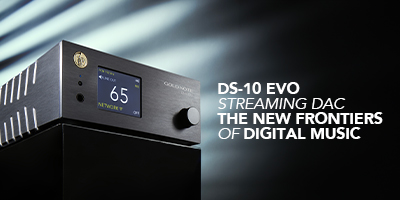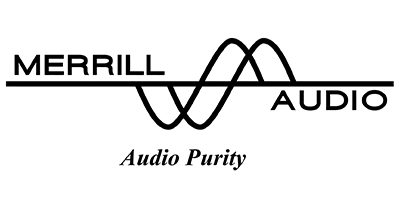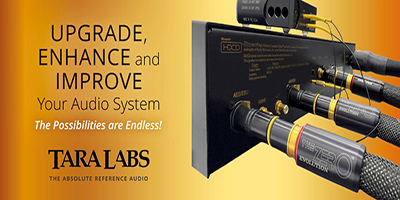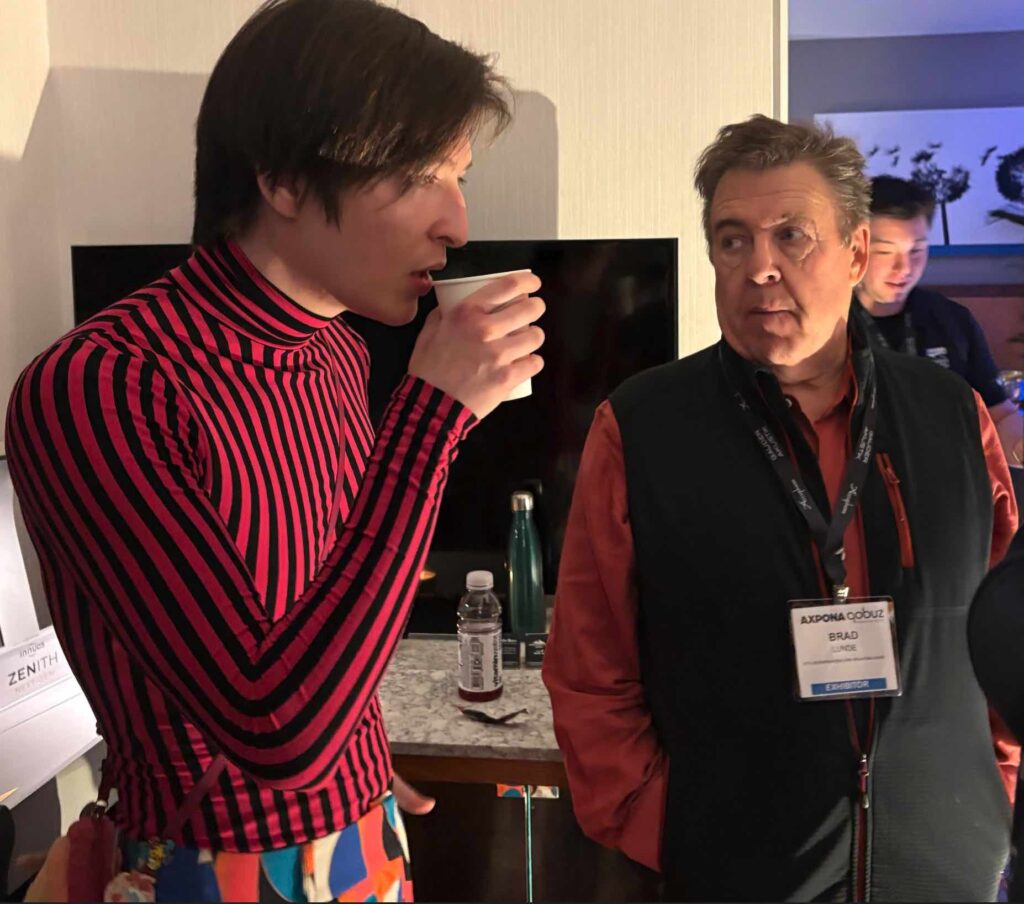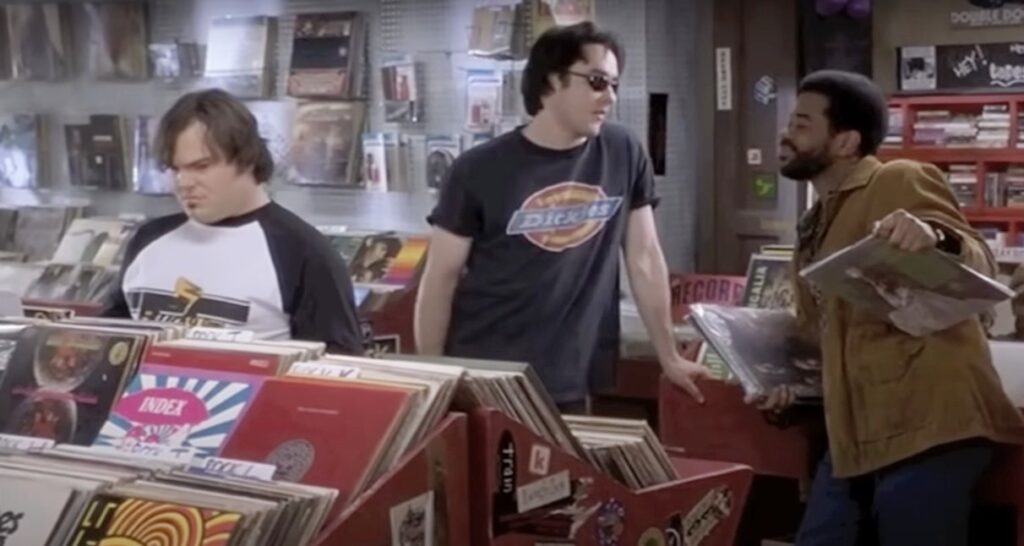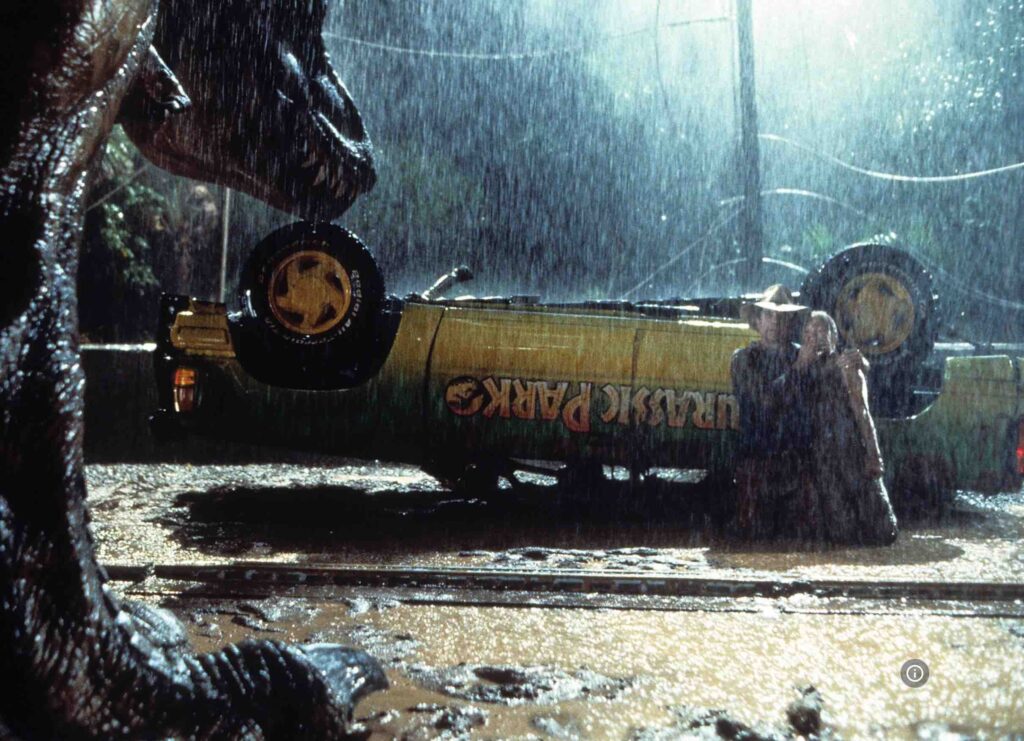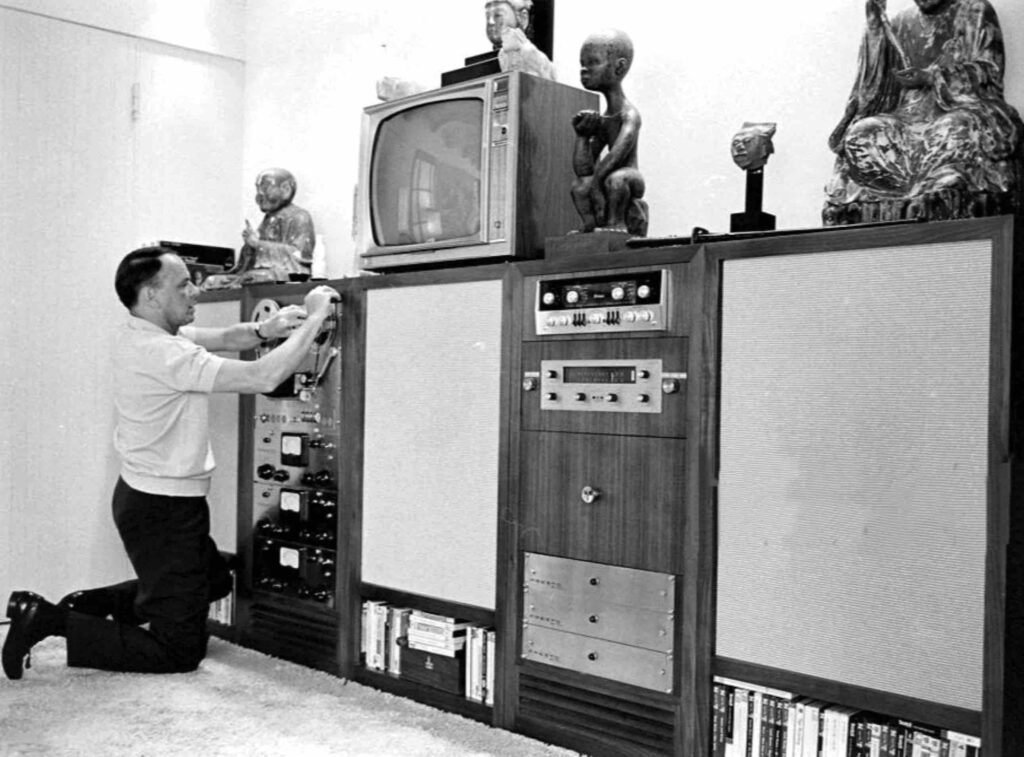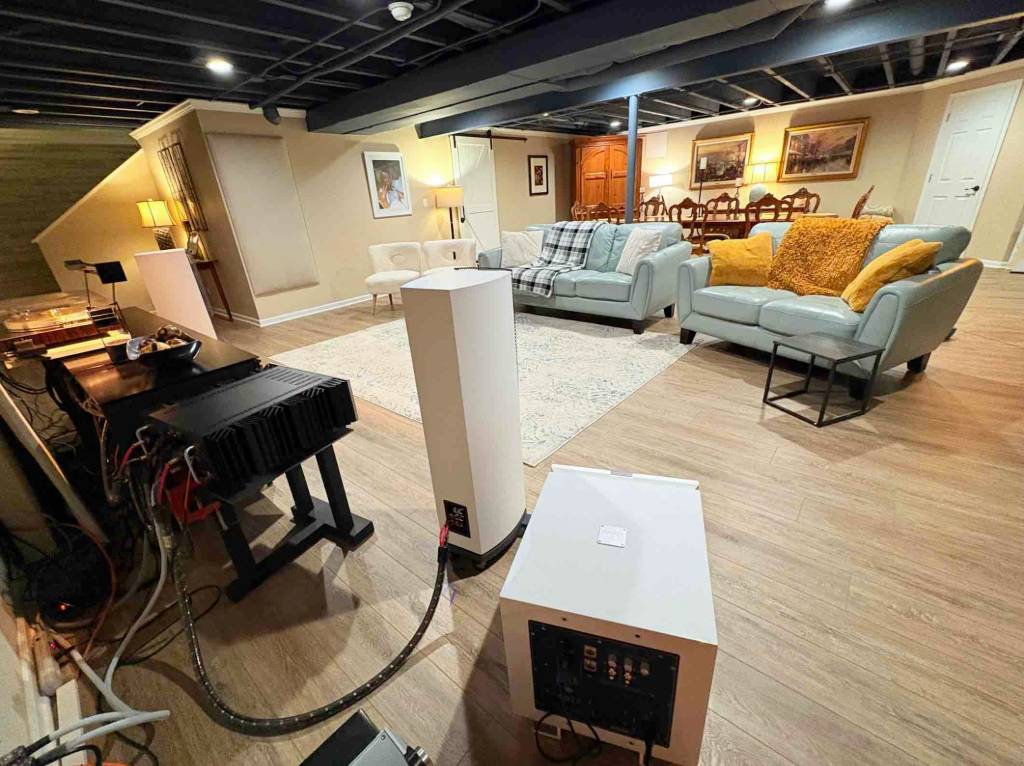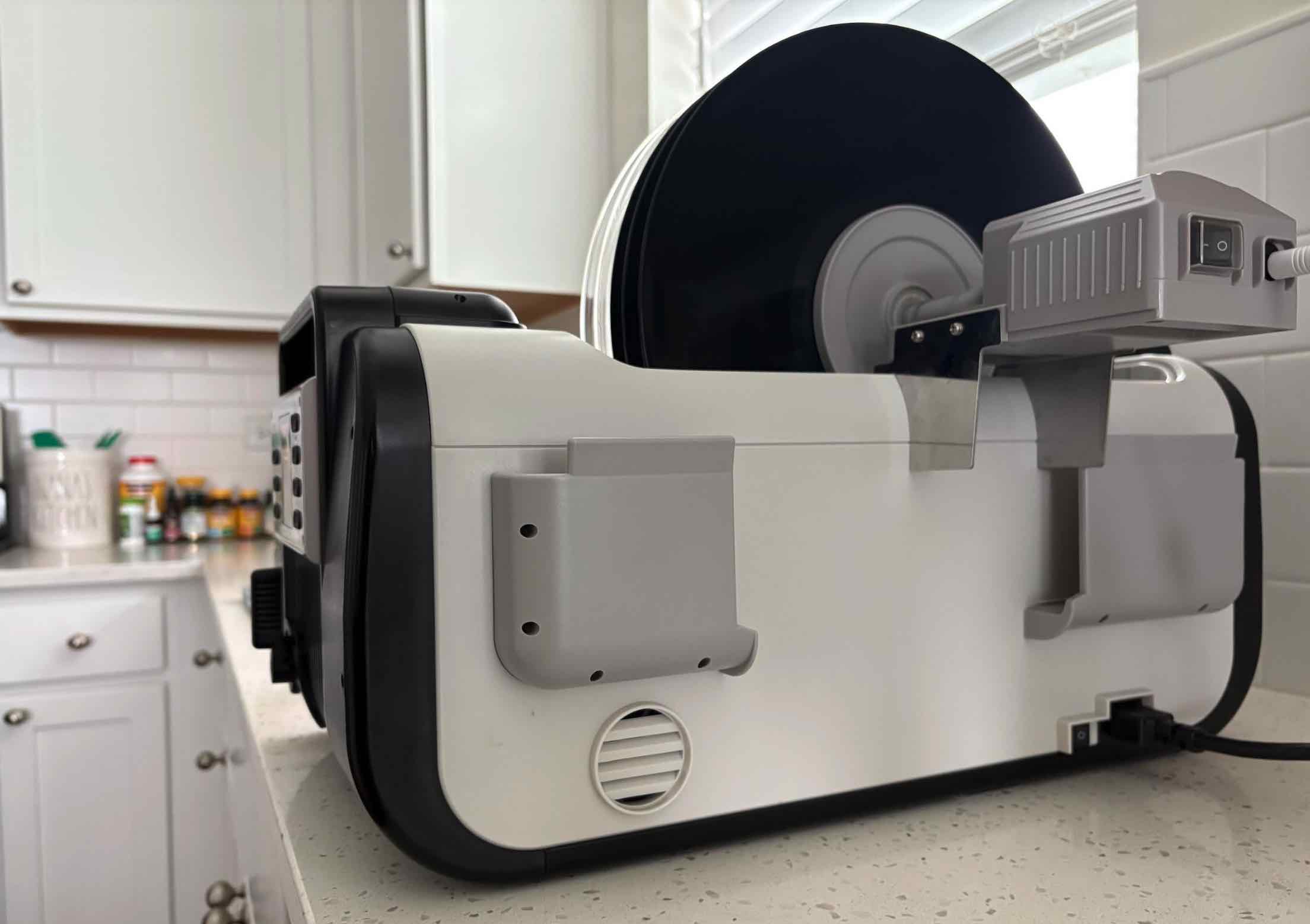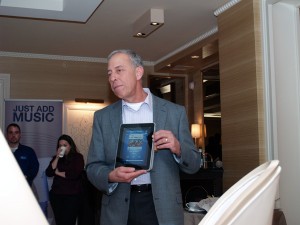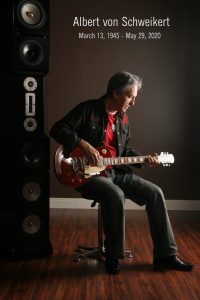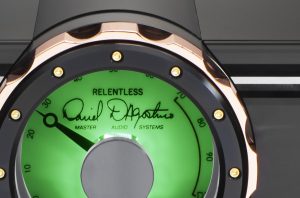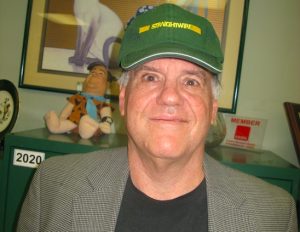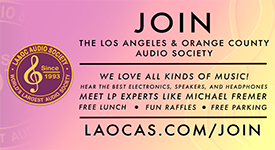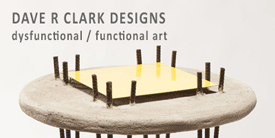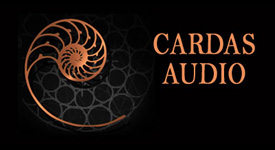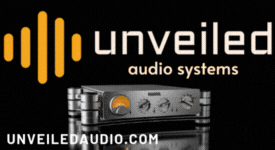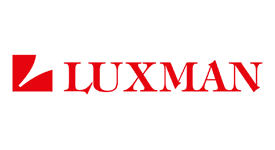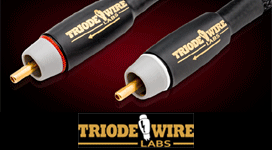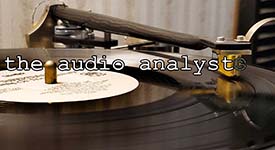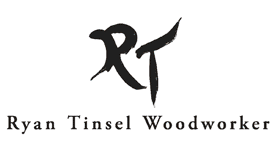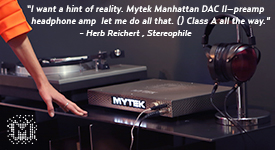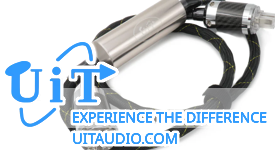Brad Lunde, at right, talks with a photographer based out of Los Angeles the ATC suite at this year's AXPONA (photo by Juan C. Ayllon)
Brad Lunde is in Room 1534 at Audio Expo North America (AXPONA) held at the Schaumburg Renaissance Hotel to expedite the introduction of ATC's brand new SCM20 ASL h, a compact active bookshelf speaker based on their previously-released 50th-anniversary limited-edition design.
For those unaware, Acoustic Transducer Company (or ATC) is renowned in the recording industry for its monitors' Uber-low distortion sound reproduction, which is invaluable in creating superb recordings. A-list recording artists like Pink Floyd, Tom Petty, Mark Knopfler, Lenny Kravitz, Vince Gill, and Diana Krall use them. Their monitors are featured in top-flight recording studios such as East West Studios in Los Angeles, Blackbird Blackbird Studios in Nashville, House of Blues in Nashville/LA, and Sheffield Labs Founder Doug Sax's Mastering Room. (Lonemountainaudio.com) And Brad Lunde expedited their success in the U.S. by introducing their pro line through his company, TransAudio Group, and, later, their consumer line through Lone Mountain Audio. In the following, he talks at length about experiences and insights on ATC and the audio industry.
<p">On his early years as a musician and a student
Brad Lunde was born in South Bend, Indiana, where he spent most of his formative years, then moved to Milwaukee, Wisconsin with his family in high school.
"I was a musician, played full-time, and attended music school. That was my initial experience in audio," he says. "I was always really interested in the gear, and I took it upon myself to start learning and studying about gear because I was just curious how to make the PA better and get the sound better."
"I was a bass player and I focused on all the bass clef instruments. I started out on horn in school and graduated through that, and eventually bass guitar and all the bass clef instruments, and tried to learn bass flute and all that. I loved all the bass instruments—and still do!"
Lunde used a pair of Klipsch La Scalas for his band's PA system in 1974, which, clearly, wasn't what they were designed for.
"But at the time, most of the PAs were sheer vocal master columns—just terrible, terrible speakers, right?" he recounts. "Most of the PA quality was really bad."
Still image from the movie, High Fidelity, courtesy of YouTube channel, HIGH FIDELITY Music Snobs
On working in a HiFi store
Soon, he realized that making money playing music full-time was too difficult, so he decided to go into the business end.
"I was working in a HiFi store in Milwaukee in the mid-70s that had been there for a long time and was big in high-end and big in tape recorders. That was still the heyday of HiFi when there was a lot of business to do. I worked there for a while and quickly became their best salesman just 'cause I liked it. It was fun. You could go to work and play music all day. How cool is that, right? And in a demo room playing your favorite music all the time!"
On his next job with a sound contractor in Milwaukee
"I worked for them for a while and learned the sound contracting business, which was completely different. Instead of selling to an individual for a HiFi, you were selling to a company, or a school, or a church, or some group of people, right? So that was a totally different approach. You needed to understand the technical stuff regarding audio, right? And how to do distributive sound systems, and how to make all the speakers have the same volume level across a whole school and that kind of stuff."
On his stereo store manager and buyer experience
"And then, the HiFi store had a problem with personnel and called me back, and wanted to know if I wanted to come back as manager. So, I came back as a manager and buyer and did that for a few more years, and then I got offered a job in a rep firm.
On repping with NAD, Dahlquist, Electro Voice, and more
"The rep firm had part of their business in HiFi, another part was M.I. (music stuff), and another part was commercial sound that was sold to contractors. And so I had all that experience in those three things, so I did the rep thing pretty well for a long time. Eventually, I became vice president of the rep company. At that time, I was the NAD rep in Chicago and Wisconsin in the 80s, and we had Dahlquist and all these other high-end lines, and we focused on higher-end stuff. And also we had pro lines like Electro Voice. Electro Voice used to be really big in HiFi prior to the 80s, but they still had a big engineering department, and they were located in Buchanan, Michigan. That was right next to Milwaukee and Chicago, so we would go over there frequently as a rep firm and visit them.
"I started interfacing with a real engineering department and learning how that worked. I found that fascinating and tried to learn about that. I did that for quite some time—twelve years! And then I decided to go learn the manufacturing business."
Jurassic Park Image courtesy of Imdb.com
On Being a JBL national sales manager, working with Texas Stadium, Jerry Jones, and Jurassic Park in Dolby 5.1
"I took a job with JBL out in California as National Sales Manager in the installed sound division. I did that for a number of years, and I got to do all sorts of stuff like go to Texas Stadium and meet with Jerry Jones (owner of the National Football League's Dallas Cowboys team) and do all those kinds of things where you had big systems, right, that were used for big venues.
"I was also in charge of all the cinema business, which was a really big part of the pro business in the 90s when all the Cineplexes were being built. I was lucky enough to be at the first screening of Jurassic Park in 5.1 because we supplied the speakers for that. And it was a DTS system, right? And you had to have a DTS system to be able to get Jurassic Park in your movie theater. It was a DVD that was essentially synched to the movie!
"That was how they got 5.1 in a theater in the very beginning, right? They didn't have the process to put it in on film; they did later. Dolby developed a system later that worked really well for that. That was the first high-fidelity movie playback. So, I got to participate in that, and I did that for a number of years.
On traveling the world, selling, and visiting distributors as an Aphex rep
"And then I decided that I would like to learn international and took a job in L.A. with a smaller audio company called Aphex, and they made signal processing like compressors and devices that were especially popular in live sound and broadcast. I traveled all over the world, visiting distributors…I went to Indonesia, I went to the Philippines, I went to Korea, I went to Germany, I went to Italy.
"I went everywhere, all over the world, selling that stuff and learning how the business worked there. And it was really interesting because it's sort of humbling because you see all these other countries and now you're not seeing the country as a tourist, but you're seeing how the local people see it. They're taking you around, introducing you to their customers. You're with them in their house, you're with them in the car, you're with them on the streets or the city.
"You're not going to see these places from a resort point-of-view, so it was really to get a window inside of that—and you realize how many places around the planet are really wonderful and they all have something to offer. You know, the United States isn't the only place on Earth! (He laughs.) I did that for a number of years, and then decided to start my own import distribution company because there weren't very many in the U.S."
On starting up his import business, TransAmerica Audio Group
"We're big enough (in the U.S.) that we can survive off of domestic manufacturers, but from my experience in the HiFi business, the import business was happening, but it was usually (comprised of) larger companies like KEF (and) BMW. You know, those kind of people were very viable businesses in the U.S., but a lot of smaller companies weren't able to get in the U.S. because they couldn't find a distributor. And finding a distributor who could actually present your product and knew who the dealers were, and could put a warehouse together, and could ship something without making a mistake—you know, that was a pretty rare thing, unfortunately!
"So, I started a distribution company in '97 to start importing stuff to the U.S., and my focus was initially on high-end recording equipment. I was called TransAmerica Audio Group, and so I focused on high end recording stuff. And, in fact with my experience in dealing with engineering departments—both with JBL and my experience when I visited with EV and other companies, I was able to help people figure out what to make and how to make it. Make this for this much money, and this is probably something people would like.
Brauner photo by www.instagram.com/studiospiccolo; Collins portrait by Imdb.com
On the Brauner Klaus Heyne Edition Mic and Phil Collins
"So I developed a whole lot of products with the manufacturer overseas, and one of them was a real high-end microphone called the Brauner Klaus Heyne Edition. It was made by Dirk Brauner, and was (originally) a $5000 studio microphone, but it wasn't very good at vocals. You got the most expensive microphones and the planet, and the most valued ones were the ones you used for vocals, so I went and recruited the most famous guy in the U.S. at tuning microphones for high-end vocals to help me modify this mike that I was importing, and his name was Klaus Heyne. I got him involved, and we developed a design and ended up selling a hundred of these mikes for nine or ten grand apiece! So it was the most expensive mike available at the time. The first three I sold were to Phil Collins. And then all these very well-known people started buying that microphone for their records and as their primary microphone."
On ATC and Billy Woodman
"So, that reinforced the high-end business for me, and I started building it, and eventually, I was at a Consumer Electronics Show, and ATC was there and invited me to come by and visit their booth, and see them. I met Billy Woodman, who was the founder of the company and the chief engineer, and I met Bob Polly, who was the manufacturing manager—and could take Billy's designs and figure out how to make them, right? Which is a really hard skill to figure out how to do.
"Billy was one of those people who design transducers, which is a really rare thing. There's not many people on the planet that design drivers. A lot of people design speakers, but they're buying somebody else's drivers and putting them in there; they're like building a kit, right? Billy was way beyond that. He was designing his own drivers and building them, (from the) ground up, in his factory in England, and was making a living at supplying drivers OEM to other manufacturers.
"So, for example, he sold drivers to Proac (and) he sold drivers to quite a few other people in the business, but a lot of them in (the) professional (arena)—Yamaha, people like that. And was a supplier of these drivers."
On introducing the Three-Inch Midrange Dome
"Billy was a rather visionary engineer and developed this product that was very unique called the mid dome—the "Three-Inch Mid Dome." And at the time when he developed it in the 70s, there wasn't anything remotely like that. Nobody had a viable three-inch midrange dome. There were some smaller midrange domes. In fact, I remember a company, ADS, had one, and there were a few other companies that were goofing around with them, but they were really hard to keep stable because they were large, and they're really hard to figure out how to get them to work in a low distortion kind of way—and Billy had figured that out in a very large driver.
"And he'd figured out something pretty clever: Wouldn't it be great if we could have a driver that would cover the entire vocal range? No crossover in the middle of any vocal. No crossover point in the middle of the most important range content that's in music. So, he developed a driver that would cross over at 380Hz at the bottom end and 3500 in the top end. No one had anything like that.
"He was really passionate about that and wanted to sell this driver, but nobody would buy it. So, he had to build his own speaker to sell it.
On ATC monitors and Pink Floyd:
"He created the 50—the ATC SCM50 to sell that mid dome—and that became very successful! And a lot of England's best musicians sought him out and bought his product.
"For example, he got hooked up early on with the Pink Floyd people. And, in fact, he built speakers for the Astoria Boat. If any of the people know Pink Floyd lore, they know about the Astoria Boat. He built custom ATC monitors for that boat a long, long time ago.
"So that was kind of the beginning of their thing, where ATC began to develop these products that were based around low distortion driver components and began to offer stuff that was both for pro and consumer (markets), right, that used the same quality of drivers—which certainly nobody had really done that.
On ATC's unified low-distortion approach to pro and consumer speakers
"Usually, pro and consumer (speakers) were very different. Pro was more interim playing loud, and consumer was more… about sounding good. And here was a company that was trying to do both in the same product. And so it really helped them have a really clear idea about how to develop a niche—and that niche is to build the lowest distortion speakers possible so that they're very useful for professional—because you can identify what's wrong—and they were very useful in HiFi because you can hear details you can't hear on any other speaker.
"So, that's kind of their angle; that's kind of the thing that they focus on: low distortion drivers, low distortion speakers, and even in the review that I watched you do, you said the same thing: I heard things on these speakers that I didn't hear before, right? And so, that works both in consumer and pro.
On assumptions: pro audio people are idiots—and vice-versa with audiophiles
"I think one of the problems that we've run into—or at least I run into because I'm both the consumer and the pro guy for the U.S.—is that a lot of people in consumer (audio) think the pro people are idiots. (He laughs.) And they don't know how to record, and they don't know how to do this, and of course, there is an element of truth to that—just like there's an element that most of the people in HiFi sell junk, right?
"The same kind of truth is that those parts of the market exist, but at the same time, the high end people in recording are every bit as fussy as audiophiles are about controlling and trying to improve every facet of playback so that they can hear the Nth degree of detail out of these recordings that they're doing, because the artists, themselves, often have a very specific sonic vision for what they were trying to create, and they're talking to an engineer about 'I want it to sound like this,' 'I want to do that,' and to have an engineer have the skillset to be able to actually achieve the artist's vision requires a very deep understanding of sonics.
"And a lot of these people are the same people that are messing around with different converters, playing around with cables, and changing out preamps, and modifying all aspects of their playback system, trying to get the highest level possible with playback so that these top artists are happy."
Frank Sinatra loading a tape on his reel-to-reel tape deck (photo courtesy of Reddit.com)
An example of a consummate pro: Sinatra—fussy about 'My Way'
"Some of the ones in the past that were famous for being fussy about how things sounded were, for example, Frank Sinatra. Isn't that interesting? Some of his early records like Come Fly with Me was recorded in a studio that I visit regularly, that is currently called East-West. That record still sounds good even to this day! And Frank was well regarded to be a technical genius vocally because he could control his dynamic range—by himself without a compressor—which is very, very difficult to do because most people aren't even aware of their dynamic range, and here he was focused on this a long, long time ago."
On Beck, Fleetwood Mac's engineer, Mark Needham, T-Bone Burnett, Diana Krall, and Tom Petty, and why they use ATC
"And a lot of these other artists are really particular about how things sound, and they want it to sound a certain way. Names like Beck come to mind. You know, he's fussy. He bought ATCs for several records that he did. I remember Morning Phase (that used) some ATC 150s for that record. And there was a fellow that was a good friend of ours, Justin Middle Johnson, who was involved in making that record, and it's a beautiful sounding record. We still use it for a demo.
"You know, Fleetwood Mac—Mark Needham, who's a current engineer for Fleetwood Mac and does all their stuff: he's a big ATC user. He loves it because he can hear exactly what the voice sounds like, and the harmonic structure and the voice exactly as it's supposed to be.
"And, of course, it's interesting how other artists like, for example, T-Bone Burnett: once he was doing a record for Diana Krall, and he's a big ATC user, and I remember selling a pair of ATCs to Diana while she was in the midst of making that record so she could hear what T-Bone was listening to and how he was hearing it, right? So, I remember shipping a pair of ATCs up to her up in Vancouver.
"That's been the ATC story on the pro side, as we get involved with these recording engineers and their customers, which are their artists, who are easily up at the top of their craft. And on the consumer side, it's been simply trying to find people that want a pair of speakers that make a piano sound like a real piano, that makes things sound the way they actually sound, instead of making things sound better than they maybe really do, right?
"Which involves—if you're trying to make things sound better—you're actually changing it. You're not revealing what's there; you're changing it. And, of course, when you get to the top of the market people like Tom Petty, people like that, they don't want you to change it. They want you to hear their vision the way they heard it. And they want you to hear it the way they hear it. So, that's why they use ATC, and that's why when you use ATC in consumer, you get a unique view of things because you're hearing it the way it was recorded. And really close to how it actually sounds. And so that's their unique angle and what makes them so different from everybody else.
On the ATC 'S Version' of the 75 mm Soft Dome Midrange Driver in pro monitors, SCM50s, and speakers higher up their chain versus those in the SCM40s
"They don't sound different. They only sound different in the amount of dynamic range they can handle. We make a high-powered version of that driver that's called the "S Version." And that just has a larger magnet on it, a larger motor, so it can handle a wider dynamic range. So that's used for our higher end models like 50 and up, and that's used for the pro models, also.
"In a recording studio, you're going to have a much higher dynamic range to cope with because you're recording a live instrument in the room over there. And, of course, live instruments can have as much as 100 dB of dynamic range, and you need a way to try and deal with that, right? When you start dealing with recordings, the range is much reduced usually because it's been reduced purposefully by the artist, and the engineer, and the record company to try to make it playable on an LP, for example. You can't have that much dynamic range on a vinyl record or the needle would pop right out of the groove. It would be such violent movements that you couldn't even track it, right?
"I don't know if you've had the experience trying to play—there's a famous record from Telarc called, 1812 Overture that had a cannon explosion in it. It was notorious! We always used to try in the HiFi business if we could track that record because if you could keep the tonearm in the groove—the cannon shot—you knew you had a turntable setup properly. It was so dynamic!
<p">"So, ATC makes, generally speaking, many of their drivers—a normal dynamic range version for the applied to HiFi that would be available in the lower end recording stuff, and then a high dynamic range version of those parts. But sonically, the parts are the same. You can't even hear the difference. They sound the same, just one will play louder than the other."
On the S Version tweeters in the SCM50s on up
"It's the same story there: It' a larger motor, bigger magnet in the S Version of the tweeter, just for more dynamic range. It sounds the same, works the same, handmade the same. All these parts are handmade in the ATC factory, and we just make those two variants. We don't really do what a lot of other companies do and have done in the past (where) they make a lesser driver and a better driver. We do have some lower-cost drivers in places where we're trying to deliver more value.
On building for value in ATC's lower-priced speakers
"For example, the SCM11 uses a driver that is not our most expensive driver, and not our most high end driver, in an effort to try to get that speaker to be affordable, right? Because not everybody's got $5,000 to put into a pair of speakers, so we're trying to figure out how to get something that's in the two thousand dollar range. How do you get that in retail to exist?
And, so, there's a special driver in the 11 that's also used in some pro models that are not as expensive to build, to make, or to buy as some of our higher-end parts. But it's a very limited number of drivers that are not what we would call our high performance range.
On the exceptional value of the ATC SCM20
"ATC's focus is to make all its drivers the best you can make them, and that's gonna make the speaker perform better. Which is why when you get to speakers like the SCM20; that's extremely high performance drivers that are in there! There's very few speakers that are available on the market of that quality. And so for its price point, it outperforms almost everything that's on the marketplace for detail, resolution, and listening to complex recordings, and hearing all of the harmonics and all the details that audiophiles want to hear."
On low distortion versus higher distortion and 'masking'
"And some of this comes round to it also is the way to get the most enjoyment out of your system. Audiophiles like to change things—change a preamp, change cables, change a tonearm, change cartridges—change all these things—and hear a difference. And when you get these high resolution parts that ATC uses, it's quite easy to hear these differences.
"When you have a lower resolution part, it can be very difficult to hear these differences because what I learned early on with ATC is that distortion in drivers doesn't show up in terms of an audible noise or audible-like the sound is distorted. The way distortion shows up in a driver is through a type of distortion that I call "masking." In other words, it covers up details. So you don't hear these subtle details on a higher distortion device than you do on a lower distortion device. So, that's really why low distortion drivers are so important; they reveal these details that are otherwise lost.
"So, it's not about how much bass, or how much treble; it's about details—how they come through the driver. And this masking that distortion creates covers these details up. It hides the enjoyment of a lot of audiophiles with their systems where you want to hear all these differences." .
On where he envisions Lone Mountain Audio and ATC going into the future
"We're steadily growing and we're attending more and more trade shows, and one of the problems we've had in the past is the company was rather small, so it couldn't go to all these shows, so now we're attending a lot more shows like this year, we're adding Florida to our schedule, and we're trying to add more shows so more people get a chance to finally hear ATC. But ATC continues to hand-make everything and they're building a new factory. They're right in the process now of building a new factory so they can expand production but not change the handmade nature of everything. So, I don't think ATC will ever be a big loudspeaker company because this hand-making thing kind of limits that, but I think they're very dedicated to trying to do it their way, which is sort of this: They're in the middle of England in an area called the Cotswolds. It really takes a lot of pride on what they call "bespoke products"—handmade products, products made to order.
"ATC is really focused on trying to build the best drivers, inside boxes that gets the best veneer on it, that you can get because they're in the land where people made dashboards for Maserati and Jaguar and all that, so you can get all these amazing veneers on the cabinets there. And ATC just wants to... stay in its lane, do what it does, and do it well, and introduce products that are innovative and give audiophiles a chance to hear things they otherwise couldn't hear."

